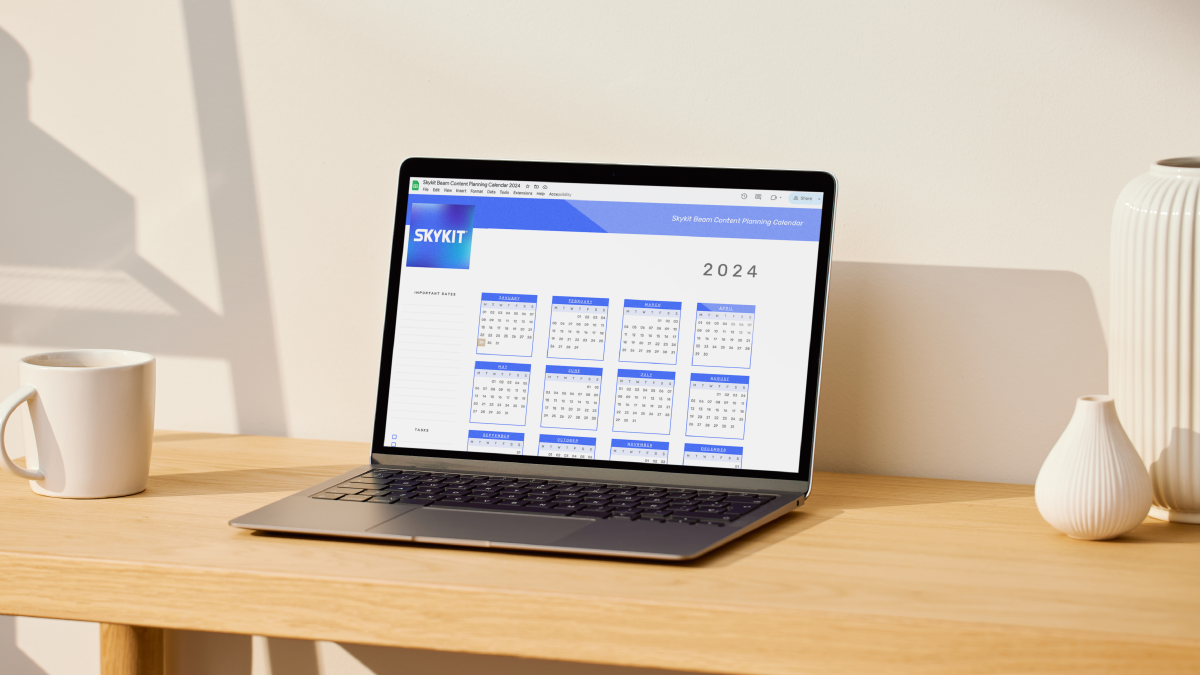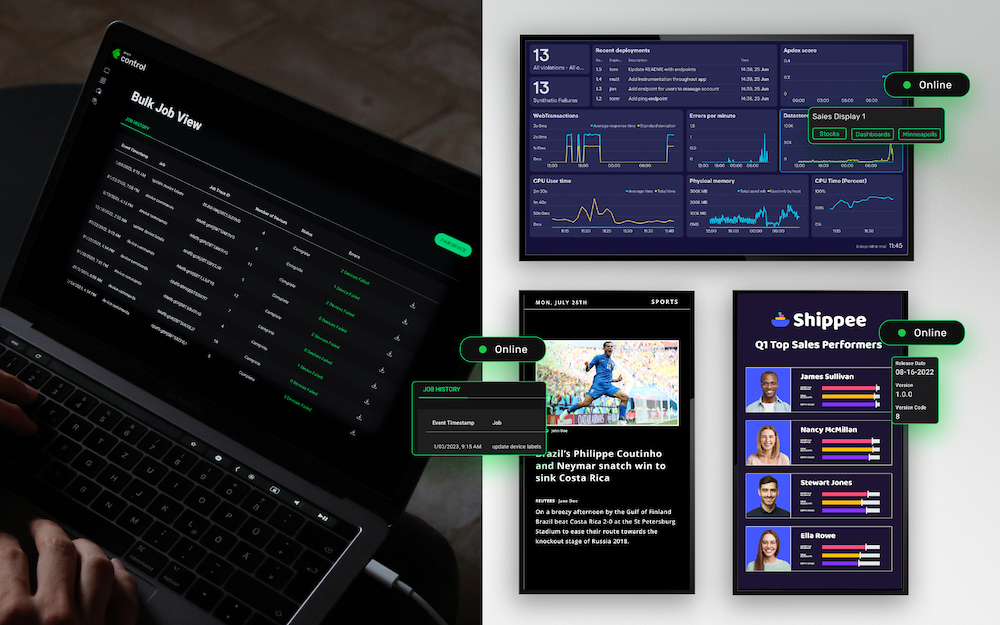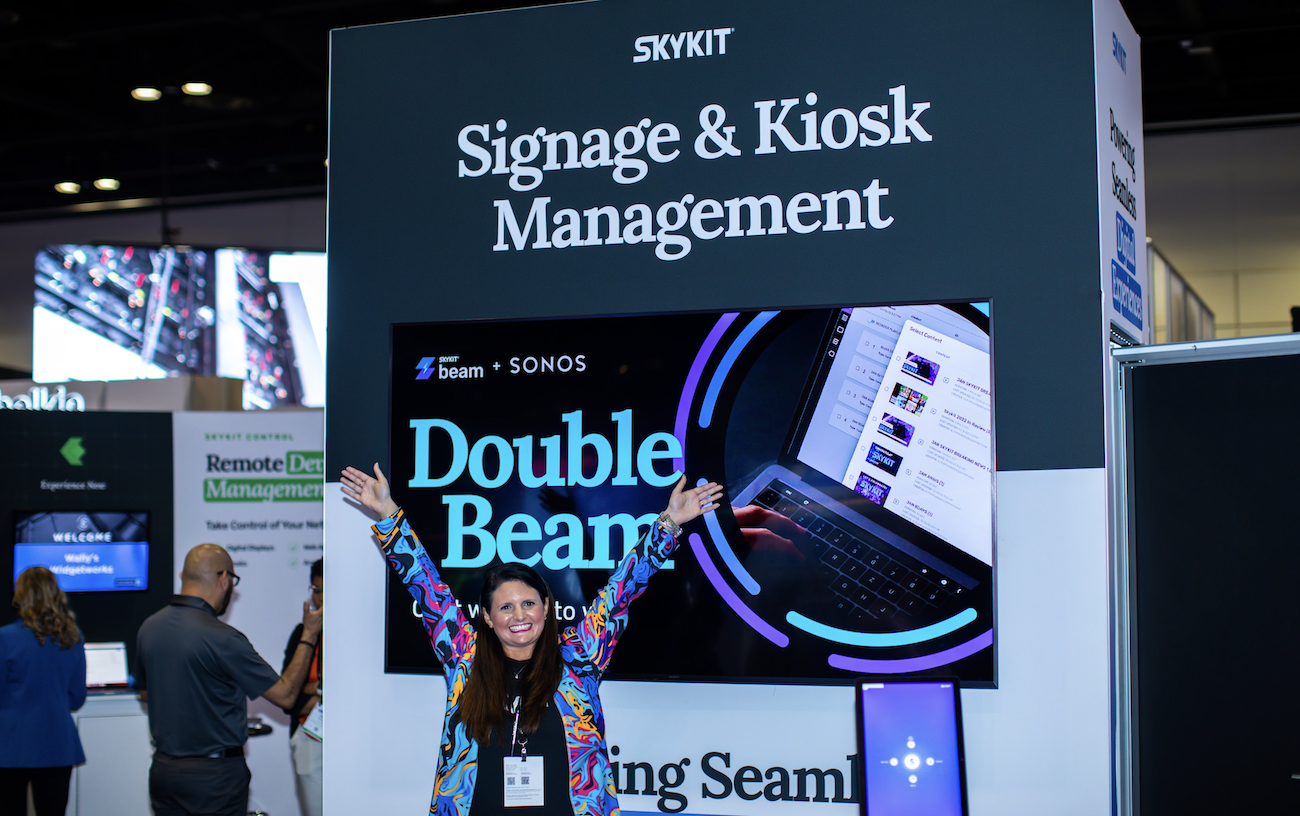Deploying dynamic menu boards is just one example of how digital signage for food service can impact the bottom line.
In a webinar for QSR Magazine, Skykit Consultant Linda Hofflander discussed some of the many ways restaurants are leveraging digital signage to better engage with customers, drive sales, and otherwise enhance the dining or ordering experience. Read on for a look at how food service can go beyond digital promo boards and menus to take advantage of some of the newest applications of this technology, like LTE-enabled signage for food trucks and immersive video walls.
What Do You Think of When You Hear “Digital Signage?”
Many restaurants already have some type of digital signage platform running. It’s common to see this technology in use for:
- Menu boards
- Drive-thru displays
- In-store promotions
- Back-of-house signs
If you don’t already have a simple digital signage system content management system (CMS) up and running, this is a great place to start. At Skykit, we’ve seen up to a 40 percent lift in orders with the implementation of restaurant digital signage, although most businesses will see closer to a 10-15 percent lift.
“A lot of it depends on the content, placement – how it’s all laid out,” Hofflander said.
Taking the Next Step with Digital Signage for Food Service
Once you’ve determined where to start with digital signage, it’s time to figure out how to grow your network and deliver even more value. Here are a few ways you can do just that.
Dynamic Pricing
One simple way to improve your digital menu boards is to implement dynamic pricing and content. Instead of manually updating your menus every time you’re running low on inventory or want to change the price of an item, you can leverage the intelligence of your POS system and automate the process.
“It can be as easy as linking your digital signage CMS to a pricing spreadsheet,” Hofflander said. The end result? Less administrative time spent on tedious tasks, and a more streamlined system.
Employee Training and Experience
If your goal is to improve employee retention or morale, consider expanding your digital signage capabilities to more back-of-house applications. You might program your content to switch over to music videos to get employees through the closing period each night. Or maybe you’ll set up interactive training experiences and quizzes for new staff who are learning on the job. When it comes to keeping employees engaged, your content options are nearly limitless.
Immersive Experiences
Taking a cue from many retail installations, digital signage for food service businesses can create entire experiences. It’s not about the size of your displays, either. You could install a massive video wall, or a single screen in a frame at each table.
“It’s how you create experience inside of your location,” said Hofflander. Just be careful that you don’t create an environment that’s too inviting. “If you’re trying to flip tables quickly, you might not want to create such a great experience that they never want to leave!” she continued. “So it’s a timing thing: how long do you play the experience, and is it a loop, or is it always fresh?”
Not everyone has access to dynamic imagery, unfortunately. Unless you have an in-house creative team or work with a contractor, you likely won’t have any display-ready branded content. The good news is that there are plenty of great free sites out there that can be used to easily create digital signage content.
LTE-Enabled Digital Signage
Digital signage is connected through WiFi, Ethernet, or LTE. But the former two can be crippled by security concerns and connectivity quality. Fortunately, we’re starting to see mobile-ready devices like the SKP Pro Mobile. These media players can be used to run digital signage without worrying about a WiFi signal or Ethernet cable.
You might use LTE-enabled signage for digital menus for food trucks, to ensure your menu stays up to date wherever your may be going. Or maybe you’re catering an event and want to have a screen with real-time cues for your staff. If security or connection are a concern, definitely consider a mobile digital signage network.
The Future of Digital Signage for Food Service Businesses
In 2018, the digital signage sector was valued at $17 billion. By 2026, it’s projected to reach $32 billion. The numbers speak for themselves, and we can say with confidence that the possible applications of this technology are only expanding.
Here are just a few developments we see on the horizon:
- Augmented reality – making immersive experiences all the more “real”
- Personalization – saving favorite orders, automatically recognizing loyalty members
- Smarter sensors and triggers – facial recognition, motion tracking, aroma-emitting displays
How Can Restaurants Put Digital Signage Into Play?
Identify Your Needs
Maybe you just want a simple digital menu board. Or maybe you’re ready to implement digitize your training program, kitchen checklists, and more. Whatever the case, spend some time outlining your needs before starting to shop for digital signage.
Ask the following questions:
- What are your current pain points?
- Where are the displays going to be?
- How will you use them?
- Who will be involved with creating content?
- Who will manage your digital signage network?
- What systems will your network need to integrate with?
- If this is a multi-year program, when might you want to phase in more capabilities?
Decide Between Consumer and Commercial Hardware
Hardware is a crucial component of your digital signage network. But the right media players and displays will depend on the size of your organization and what you’re trying to accomplish.
“Many small businesses buy like consumers,” said Hofflander, “so you’re thinking in terms of going down to the store, grabbing a display and putting it on the wall. But what you need to think about is whether the equipment is designed to be used for longer periods of time. Is it going to be turned on for 16 hours a day, seven days a week? That’s not how a tv screen is built.”
Depending on the placement of your screens, you’ll need displays that can withstand the restaurant environment, provide adequate brightness, and run for long periods. A commercial-grade display is more durable than consumer hardware and can stand up to dust, dirt, grease, and more. This heavy-duty hardware can also allow you to lock your devices down, ensuring that they don’t get tampered with on the front-end.
Find the Right Partner
Once you have an understanding of your needs, you can start searching for the right partner. We wouldn’t recommend trying to deploy digital signage on your own! You don’t want to overbuy and end up with a pricey solution where you only use 10 percent of its capabilities, for example.
The right solution will be driven by your pain points. What’s important to you? Security, ease of use, integrations, or something else? Check out our digital signage guide chapter on finding the right partner for a more in-depth look at how to identify the right fit for your needs.
Ready to Revamp the Customer Experience with Restaurant Digital Signage?
Whether you’re looking to get started with easy-to-use digital menu boards for restaurants, or you’re ready to take your digital signage program to the next level with dynamic pricing and immersive experiences, we’re here to help you put this powerful tech to work. Skykit provides cloud-based digital signage solutions that allow you to schedule and display content from anywhere. Reach out today to learn more about putting this tech to work in your restaurant.



